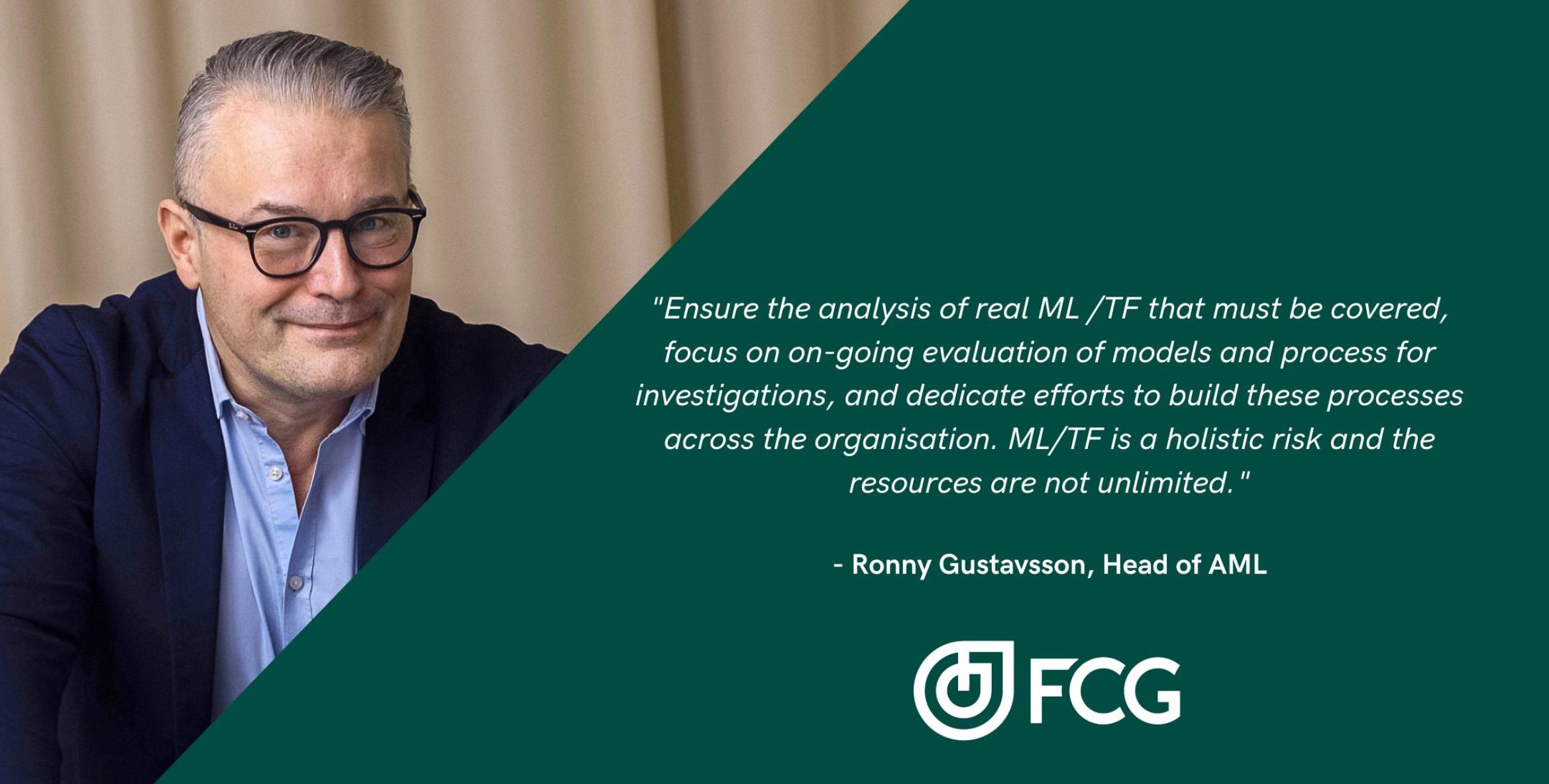Business intel worth billions yet to be put to use

Banks devote a lot of resources to transaction monitoring, but improvements are needed in a number of areas, says a new report from the Danish Financial Supervisory Authority (Finanstillsynet). This applies both to the monitoring systems and to the procedures,
“-This is a challenge to many, if not most, financial institutions today. Suspicious Activity Reporting could be much more effective and generate much better intelligence, if basic KYC data and scenarios would be in place to start with. It makes a world of difference really understanding a customer´s expected use of a bank,” says Ronny Gustavsson, Head of AML at FCG Advisory.
The future is data-driven, and setting parameters to better inform transaction monitoring is key. Listening to AML-professionals, it is not uncommon to unofficially question the usefulness of KYC as a process. By the same token, KYC performed well, can add tremendous value to the business.
Breaking silos and assuring a complete picture of a banks risk exposure, understanding how it might be misused is difficult to achieve. When an organisation is able to do this successfully, it allows transaction monitoring to be based on much more accurate and effective scenarios. Customer relations and effective transaction monitoring is the core of a functioning AML system.
Financial institutions must be able to ensure that customer transactions are consistent with their knowledge of specific customers, their business and risk profiles. Only with this in place, it can assure the ability to identify unusual transactions, may it involve complex or unusually large transactions, unusual transaction patterns or activities.
The Danish report based on inspections of seven banks, concludes that:
· Monitoring scenarios need to be developed more
· Trade finance is not monitored well enough
· Capital market transactions are often not adequately monitored
· The procedures for investigating alarms are not always sufficient
· Data centres may involve too little flexibility
“-Looking ahead, most organisations need to continuously adapt and improve their transaction monitoring systems. One can always discuss if and how it is possible to stay the step ahead of financial crime, and this is highly critical. This a common challenge across the board in financial crime prevention including anti-corruption management,”
comments Ronny Gustavsson
This was also confirmed in Finanstilsynets report, confirms that there will continue to be a need for banks to devote significant resources to updating and improving their transaction monitoring and the processing of alarms.
“-There are no quick fixes, but if we were to offer three pieces of advice, those would be to ensure the analysis of real ML /TF that must be covered, focus on on-going evaluation of models and process for investigations, and dedicate efforts to build these processes across the organisation. ML/TF is a holistic risk and the resources are not unlimited,”
concludes Ronny Gustavsson.